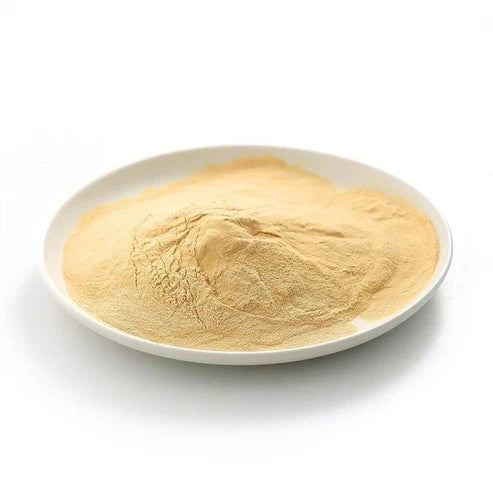Nutritional Yeast (Inactive Dry Yeast)
Uses: as food supplement for humans, feed supplement for livestock in times of dearth, bread and cakes improver.
Flavour: nutty flavour, similar to crushed roasted chick peas. Humans eat it and animals benefit from it. However due to its price, it is used in small amounts as a feed. In beekeeping at least 10% of pollen substitute can contain Inactive yeast, fed in times of dearth only. It improves brood health and overall colony health. Other live stock will benefit from it. Inactive yeast is yeast that, as a result of high-temperature processing, have lost its fermenting abilities, making it impossible to prepare baked goods with it.
Inactive yeast is an excellent source of B vitamins that work throughout the body. It also contains minerals such as: Zinc - plays a role in immune processes, soothes skin problems.
Magnesium - participates in the work of muscles (including the heart), helps reduce stress and fatigue, and also affects the condition of hair and nails.
Selenium - has a strong antioxidant effect, affects the proper functioning of the thyroid gland.
Chromium - regulates glucose metabolism, reduces appetite for sweet products.
Iron - is a component of haemoglobin, takes part in the transport of oxygen, is necessary for the proper growth and development of cells.
Enriching the diet with yeast is recommended for problems with concentration, to improve the condition of hair and nails, for people with skin problems (acne, psoriasis, atopic dermatitis), suffering from varicose veins or migraine headaches. Unlike traditional baker's yeast, inactive yeast does not cause adverse digestive symptoms (flatulence, gas, etc.), which is why it can be successfully used as an addition to dishes without the need for thermal processing.
Best Before: December, 2027.
Storage: Store in a cool, dry place.


